When I was learning how to bake, I made A LOT of mistakes. Neither of my parents had ever baked anything… and I had no one to show me the right way to do things. So I just did things… a lot… over and over until I got it right. In the process, I have learned a lot about what to do vs. what not to do. Some of the things that I will mention may seem very elementary to an accomplished baker… but for the typical person who bakes occasionally… some of this might be relevant information. (I know it would have been helpful for me when I first started baking!)
I get questions and comments sometimes regarding recipes and why they have failed for a particular person – many of those problems can be fixed by following the procedures here. I’m always happy to answer comments/questions that I get via email, but I figured it would be helpful to have a baking “how to” for reference.
HOW TO PREPARE YOUR INGREDIENTS:
For most baking recipes, you will want to start with room temperature ingredients (if there is no mention of temperature in the recipe). Remove your ingredients from the refrigerator about an hour or so before baking to get the chill out. (***The exception to this would be if you are making a pastry (pie crust, biscuits, etc.) – in that case you typically want to start with cold butter.***) If you start out with cold ingredients instead of room temperature ingredients, the starting temperature of your cake batter (for example) will be colder than expected, and it will take longer to bake. As a result, you might end up under-baking your cake (the outside might be done, but the inside might be under-cooked or raw causing the center to possibly collapse upon cooling).
Read the recipe first, and make sure that you have all the ingredients you need before starting – there is nothing worse than being in the middle of mixing a cake, only to realize you are out of milk, or you are a few eggs short! Pay particular attention to the body of instructions – a recipe may call for 2 c. of milk in the ingredient list, but only want you to add 1 c. to start, and use the other 1 c. for something else – make sure you know beforehand where your ingredients are going. (Read ALL the instructions from start to finish!)
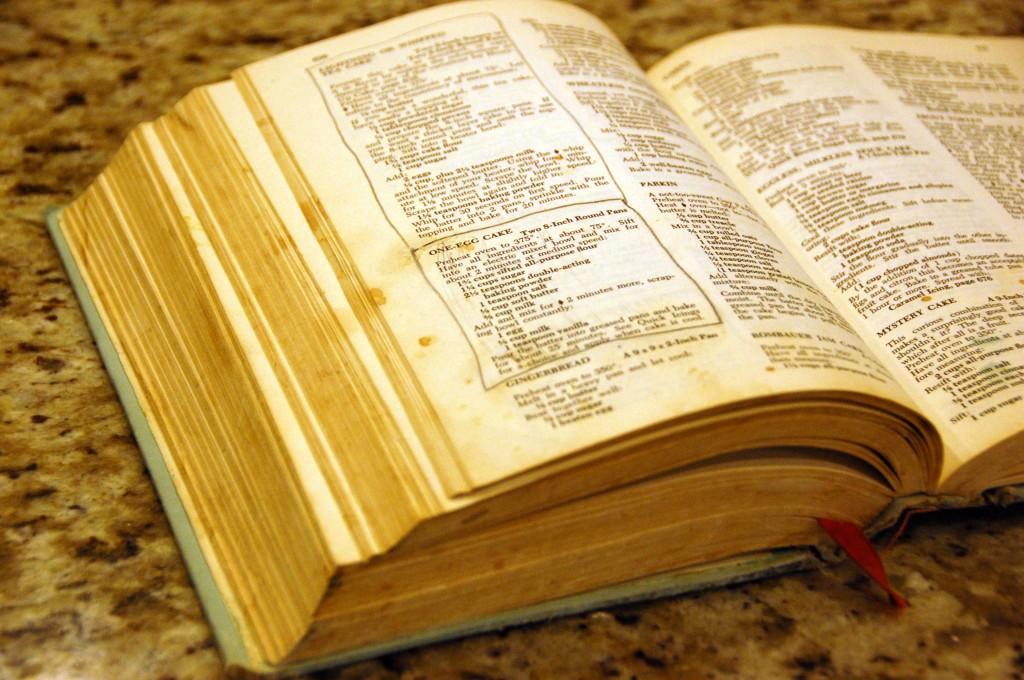
Read the ingredients list and all the instructions from beginning to end, before attempting a recipe.
Also, make sure your ingredients are fresh – particularly the leavening agents. If your yeast is dead, your bread will not rise. If your baking soda or baking powder have gone flat – same thing, you will not get any CO2 bubbles to help your cake rise.
SUBSTITUTING INGREDIENTS:
If it is your first time making a particular recipe, do it without any substitutions! I can’t tell you how many recipes fail because of a substitution… so before you start tinkering, make sure you know what the actual recipe is like exactly as written. Once you get the hang of a particular recipe, then you can start experimental substitutions, to see what you can get away with. Some recipes are very forgiving, and you can make a lot of substitutions, and some recipes are very finicky and don’t do well at all with substitutions. So just keep in mind, just because one substitution has worked for you in the past with a different recipe – it may not work this time. Be particularly careful when changing the ratio of fat:sugar:flour:eggs. These are your structural ingredients, so too little (or too much) of one (out of proportion with the other ingredients) can cause major structural failure.
When substituting flour, note that not all flours react the same. Lower protein flours (cake) tend to be softer and produce a more delicate texture while higher protein flours (bread flour) are “harder” and produce more gluten for a chewier texture. So if your recipe calls for cake flour and you use bread flour instead, you will have a problem! If you do need to substitute flours:
1 c. cake flour = 3/4 c. all purpose flour + 2 T. all purpose flour + 2 T. cornstarch
1 c. bread flour = 3/4 c. all purpose flour + 3 T. all purpose flour + 1 T. vital wheat gluten
Whole grain flours also tend to be denser, causing a drier baked good. My rule of thumb for substituting with whole wheat flour is to only substitute for up to half of the all purpose flour, while not altering any of the other ingredients. For example, if you are trying to make a “healthy cake”, and you use half whole wheat flour, reduce the sugar, and substitute the oil with applesauce… you will not have a cake in the end, you will have something that resembles (and tastes like) cardboard. So don’t try to substitute or reduce too many things – in the end, you won’t want to eat it, and will have wasted ingredients. Next time, make a smaller substitution, and just eat a smaller portion of your baked good.
HOW TO MEASURE YOUR INGREDIENTS:
I’ve mentioned before that baking is not so much an art as it is a science – organic chemistry to be exact. That means that you can’t really “eyeball” the ingredients you are relying on to produce a structure… you need to measure the quantities precisely and methodically, so that you get the same results every time you bake. You also need to make your measurements with the right tools.
Use volumetric cups for measuring dry ingredients like flour, sugar, or other dry goods. Use pyrex measuring cups with a spout for any liquid ingredients. And for small quantities that call for “teaspoons” or “Tablespoons” – use actual spoon measuring sets – do NOT use the small or large spoons from your cutlery set.
HOW TO MEASURE FLOUR:
Use a spoon (or even the edge of the measuring cup) to stir up or fluff up the flour. Scoop the loosened flour into the cup (gently), allowing the flour to be slightly overfilled. Use a flat edge (chopstick, back of a butter knife, etc.) to sweep the overfilled flour back into the bag.
***At no point do you want to tamp the flour down, or hit the measuring cup against something to “settle” or “level” the flour. If you do this, you will actually pack the flour granules tighter together, so that you end up with more flour than your recipe is actually calling for.***
HOW TO MEASURE LIQUID:
Place your measuring cup on a flat even surface (do not hold the cup in your hand as this will most likely tilt the cup, and you will not get an accurate measurement). Pour the liquid into the measuring cup to the desired measurement mark. Bend down to eye level with the measuring cup, and make sure the meniscus of the liquid touches the line.
TEASPOONS VS. TABLESPOONS:
Be careful with teaspoons vs. tablespoons! Make sure you know which the recipe calls for, and use the appropriate measure. Many recipes can be completely ruined by using the wrong amount of baking soda, for example. These are the standard abbreviations used:
“tsp.” – teaspoon (4.92892 mL)
“T.” – Tablespoon (14.7868 mL)
3 tsp. = 1 T.
***Never use the small and large spoons in your cutlery set to measure teaspoons or Tablespoons in baking. Cutlery spoons are not going to give you a standard measurement. So when a recipe calls for “tsp.” or “T.”, use an actual measuring spoon set!***
HOW TO MIX INGREDIENTS:
Generally, your recipe will tell you how to do this – what order to mix the ingredients, how long, and until what point. If you don’t have a good set of instructions to rely on, then I analyze the recipe to see what it is for and what the ingredients are.
If you are making some kind of “cake” like item or cookies, and your ingredients call for BUTTER, then you will want to use the CREAMING METHOD: Basically, you start out by blending the sugar into the butter for a several minute time period in order to create “bubbles” in the butter mixture. This step will make your butter mixture light and fluffy, with the air bubbles causing it to expand in volume slightly (much like whipped cream is expanded in volume). These air bubbles are important because they will expand further with the heat of baking to help provide lift (rise). Once you have creamed the butter and sugar, then usually you will add the eggs in gradually (one at a time), and incorporate them completely, before moving on to adding the rest of the ingredients. (Under creaming your butter will often result in a flat cake, or cake that doesn’t rise properly.)
If you are making some kind of cake, quick bread (e.g. pumpkin bread), pancake, or muffin using OIL, then you will want to use the MUFFIN METHOD: Mix all the liquid ingredients together (in this case, sugar counts as a “liquid” – so mix the sugar into the liquids). Then, sift all the dry ingredients together (including the salt, leavening like baking soda or baking powder, and any dry spices like ground cinnamon. To “sift”, you can run all the ingredients through a traditional sifter, or you can do what I do… put all the dry ingredients into a bowl and use a wire whisk to mix it all up together so that you have an even mixture. (There is nothing worse than biting into a piece of cake and tasting a lump of baking soda – so make sure you mix everything together well and that no lumps of anything remain!!!!).
In the final (MUFFIN METHOD) step, you mix the liquid ingredients and the dry ingredients – just until mostly incorporated. You want to avoid over-mixing, and make sure you STOP MIXING right when the ingredients have come together. For certain recipes (like pancakes), you may even want to stop mixing if there are still a few lumps. (Over-mixing develops gluten, which will toughen the texture of your cake.)
If you are making some kind of pastry (like pie crust), scone, or biscuit, then you will usually want to use the BISCUIT METHOD: Cut the COLD solid fat (butter, shortening, lard, etc.) into the flour & dry ingredients using a food processor, pastry blender, or even two knifes. Once the mixture resembles crumbs, you add the liquid and knead it just until the dough comes together.
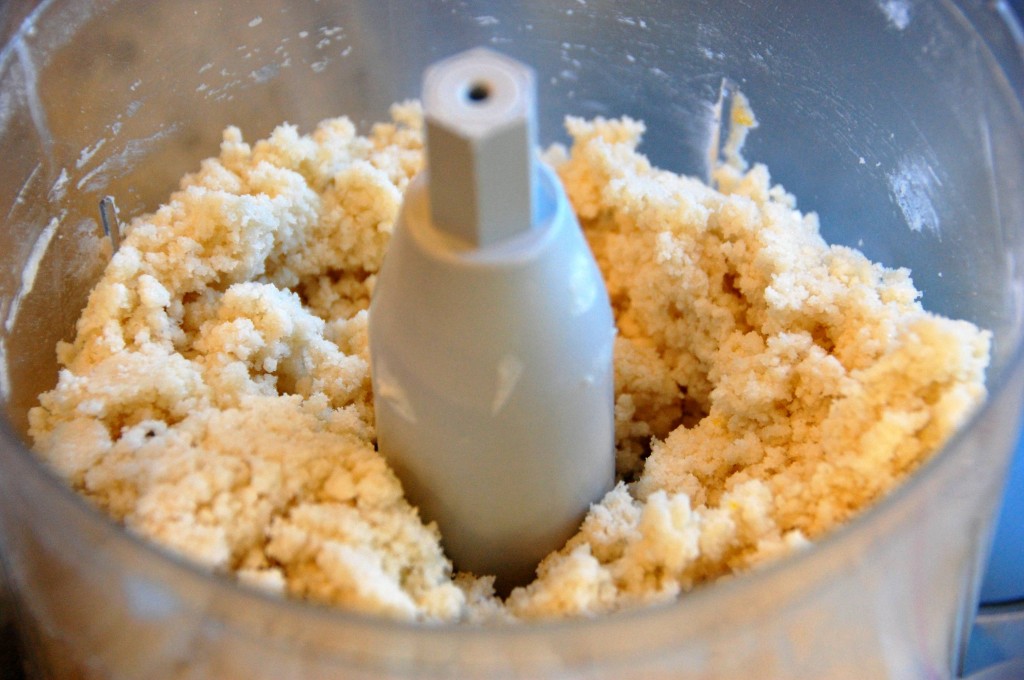
For pastry, you cut the butter into the flour (and dry ingredients) first, then add the liquid last to form a smooth dough.
HOW TO PREPARE YOUR PAN FOR BAKING:
COOKIES: For cookies, I find that the best method is to bake on a sturdy Aluminum Cookie Sheet with a Silicone Baking Liner. Otherwise, use Parchment Paper to line your cookie sheets, or non-stick foil. You can also use non-stick cookie sheets, or grease your cookie sheets with butter or shortening – but I find that the cookie bottoms tend to burn sometimes when baking directly on top of the metal (and tend to stick more).
CAKE PANS: I prefer to spray the inside of the pan (bottom and sides) with Pam for Baking Spray. Cakes come out perfect for me every single time I use this spray – however – because the spray contains lecithin, you may end up a with a gummy residue on the pan areas that you oversprayed. So try only to spray the areas of the pan that the cake batter will actually touch – try not to spray the tops or sides of the pan that will not come in contact with the batter. I really prefer the spray – especially when it comes to intricate pans that may have small details, cracks, and crevices (like a fancy bundt pan).
The other method that I use is to grease the pan entirely with some sort of fat (butter, shortening, or oil), then add a small amount of flour (unsweetened cocoa powder if making a chocolate cake). Tap the pan (while rotating it) over the sink, making sure you get a fine coating of flour over every inch of the pan that will come in contact with the batter. Tap out the extra flour before filling with batter. I’ll mainly use this method with loaf pans, or something that is fairly “straight”.
LAYER CAKES: If you are making round cake layers (especially if this is a cake that you want to decorate, then I grease and flour the entire pan sides and bottom with either of the above methods, but add a circle of waxed paper into the bottom. (Trace the bottom of the pan onto waxed paper, then cut out the circle slightly smaller so that if fits into the bottom of the pan. Grease the pan, then add the waxed paper on top of the greased bottom.) When you remove your cake from the pan, you can slowly peel the waxed paper off the cake layer – leaving it nice and smooth (It also helps to remove the cake from the pan without it breaking).
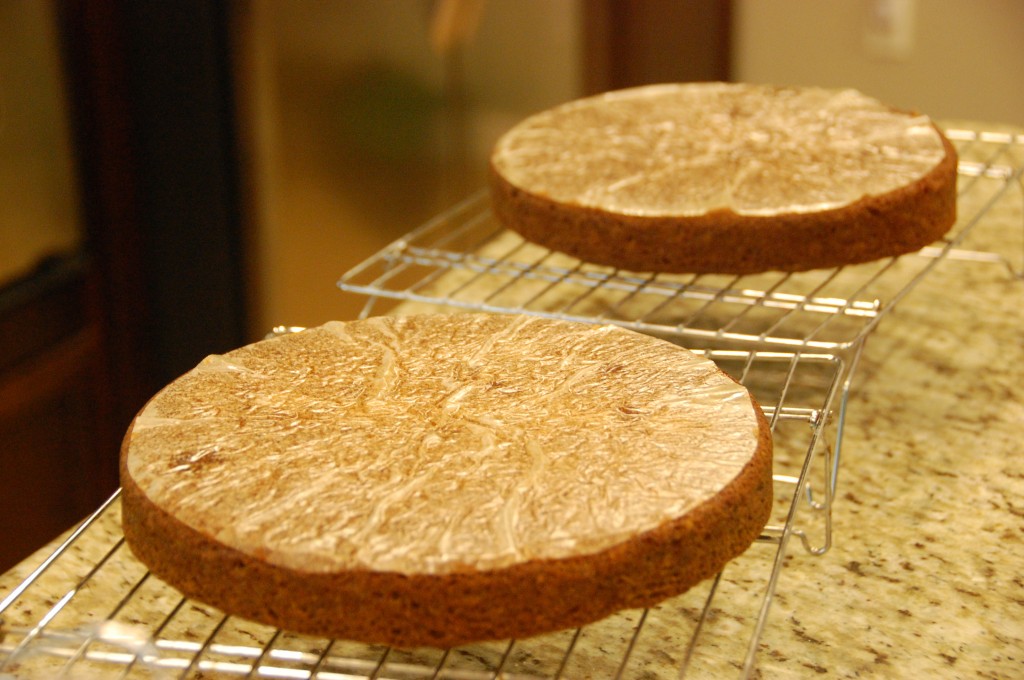
You can see when you invert the cake, the bottom comes out undamaged because of the waxed paper circle. Once you remove the cake from the pan, gently peel the waxed paper off the cake surface.
***Pay attention to the instructions in your recipe though – for certain recipes (like chiffon or sponge cakes) it is very important that you leave the cake pan UNGREASED so that the cake has some structure and support to cling to while baking and cooling.***
BAKING YOUR RECIPE:
PREHEAT THE OVEN: Unless your recipe calls for a start in a cold oven, then preheat your oven ahead of time (about 15-20 minutes). You want the oven to be nice and hot so that when you put your cake or cookies inside, the baking process starts immediately. If you start with a cold oven, you might find it takes longer to bake – or your outside is done while the inside is still under done.
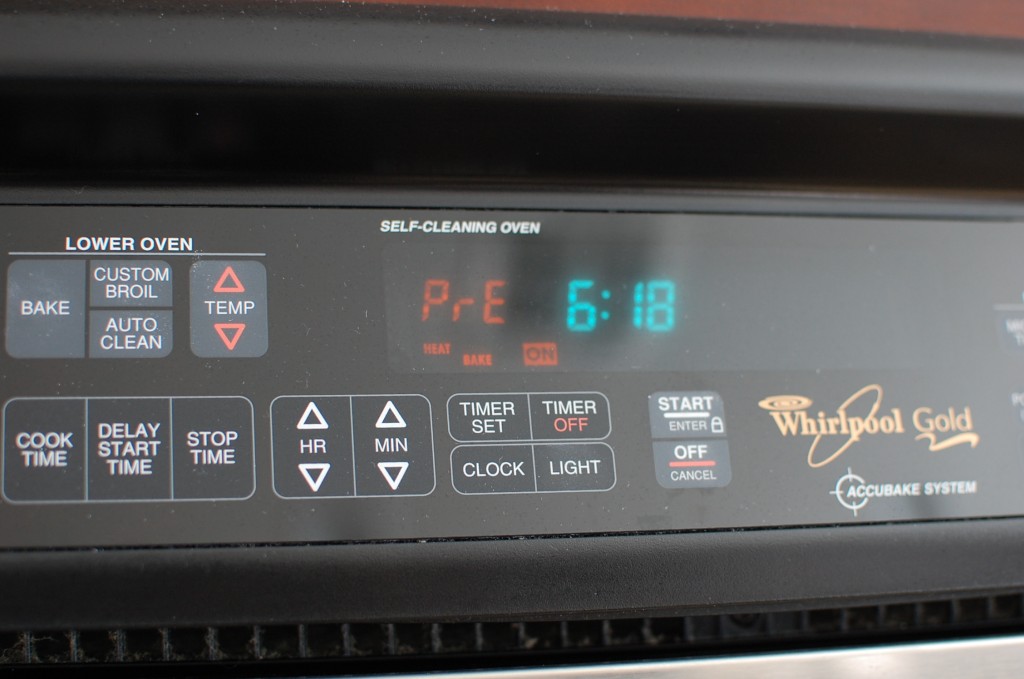
My oven has a preheat cycle. Once the cycle is done, I let the oven preheat another 10 minutes or so.
ENSURE EVEN HEATING: Not all ovens are the same, so always look at recommended baking times as guidelines, not as strict rules! If your oven runs hotter or colder, you may need to alter how long you bake for. Also, some ovens cycle on and off – so the heat may not be evenly applied over a period of time. My remedy for this is to leave a ceramic pizza stone in the bottom of the oven at all times. The pizza stone will heat up during the preheat, then will help keep the oven temperature constant throughout the baking period. If you don’t have a pizza stone, you can use a clean unglazed ceramic tile. With certain recipes, you may also need to rotate your pans: front to back, top to bottom shelf and vice versa to ensure even baking.
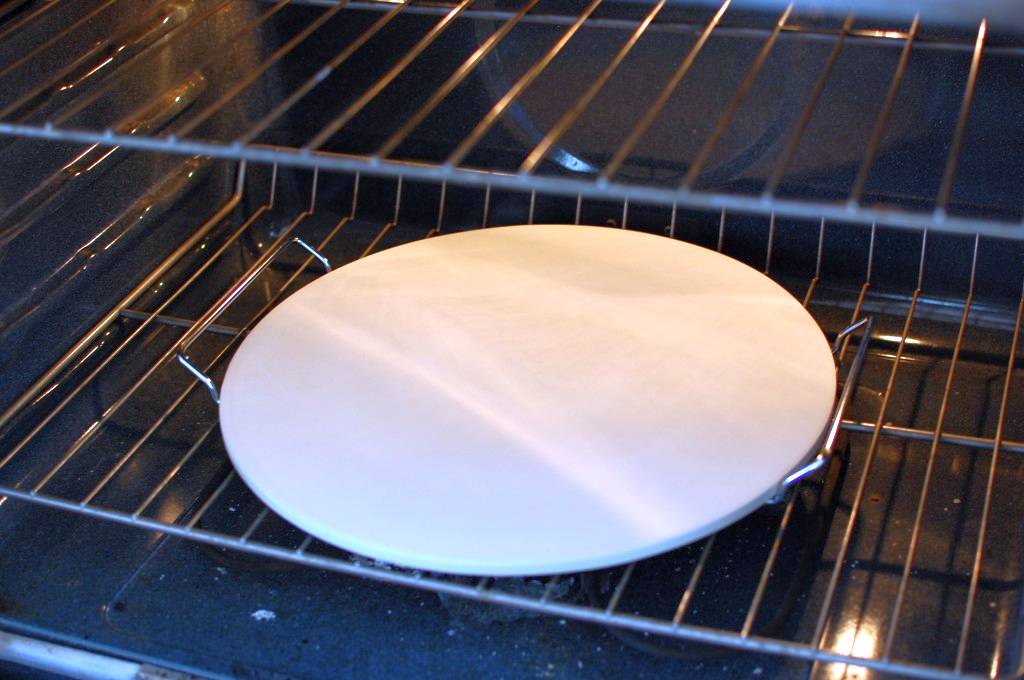
Here's my pizza stone when it was nice and new. After use, the stone will become discolored... that's ok, it still works!
OPENING THE OVEN TO CHECK PROGRESS: Remember, baking times are GUIDELINES, not proclamations! Not all ovens are the same, and atmospheric conditions will also change how fast your items will take to bake. So check your baked goods for doneness before removing from the oven. If you are making a simple cake or cookie recipe, you can usually open the oven to check a few minutes before the suggested time. For example, if making cookies and baking time is 10-12 minutes, I would start checking around the 8-9 minute mark. For a cake that says to bake 55-60 minutes, I would probably start checking around 45 minutes. But…. make it quick. Don’t leave the oven open for too long, because you will let all the heat escape. Just open the oven, reach in carefully and poke the top of the cake with your finger, and CLOSE THE DOOR IMMEDIATELY.
If you are making any type of cake that is leavened with egg white foam – an angel cake, chiffon cake, or any other egg leavened item (like a souffle)… do not do this at all. If you open the oven door prematurely, the loss of heat will cause your cake to collapse, as the protein structure may not be set yet!
HOW TO CHECK FOR DONENESS: The method I use the most, is to poke the top (center) of the cake with a clean finger. If the cake feels spongy – and it springs back when touched, then it’s done. If the cake feels soft, and your finger sinks in – or if you make a small dent that does not spring back, it needs to bake a little longer. If you mistakenly remove a cake before the inside of the center is set, then it will usually collapse while cooling. So make sure that your cake is actually done before removing.
Another method you can use is to insert a wooden toothpick into the center, and see if it comes out “clean”. Sometimes this method works for me, and sometimes it doesn’t – it just depends, so I prefer the finger method.
FOLLOW INSTRUCTIONS FOR COOLING: A recipe will usually tell you how long to let the baked goods cool before removing from the pan. My typical rule of thumb (if there are no instructions) is to leave cakes to cool in the pan for 5-10 minutes before inverting to cool on a wire rack, or to let cookies sit on the sheet about 2-3 minutes before carefully sliding them onto a wire rack with a flat metal spatula.
For egg white leavened cakes (like angel or chiffon), there may be an additional step requiring you to hang the cake upside down while cooling. If your recipe says to do this – and you don’t – you might find that your cake has collapsed in the end. So follow the instructions for cooling if your recipe gives any! A friend of mine tried my Banh Bo Nuong recipe (Vietnamese Honeycomb Cake), and lamented that “it didn’t work” even though she followed ALL the instructions (or so she said.) I asked her, “Did you let it cool upside down? Did you use an UNGREASED pan?” And she looked at me like I had 3 heads. No, she didn’t. She just didn’t know or realize how important those parts of the instructions were. So remember, if the recipe gives you some specific instructions on how to cool the cake properly – follow them! The author probably put those instructions there for a good reason!
GLAZING/FROSTING/DECORATING: Wait until your cake or cookies are completely cool (without even a hint of warmth) before attempting to frost or decorate. If your cake is still warm, it will cause the frosting to melt and slide off – so be patient – let your cake cool before assembling it! (When making large sheet cakes, I often will bake the cake layers a week in advance and then freeze them, tightly wrapped in plastic. Then, the night before the event, I will frost and decorate the frozen cake layers – it’s actually much easier to work with frozen cake!)
Once in awhile a cake recipe will call for a glaze or soak to be applied while still warm – in that case, follow the instructions as written.
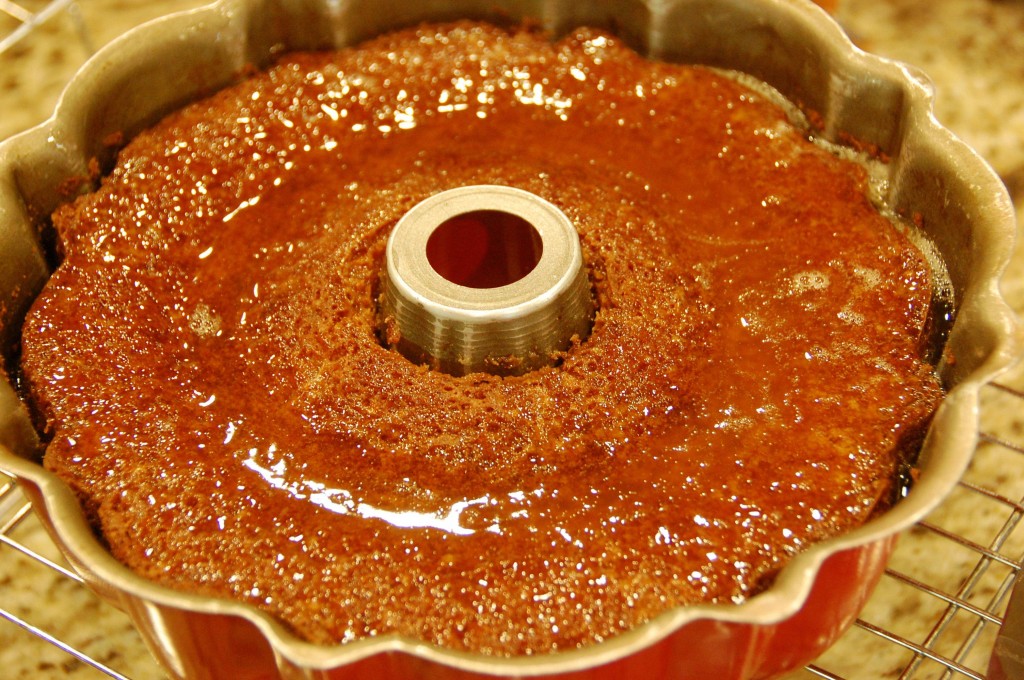
This is a Caribbean Rum Cake that calls for soaking with warm rum glaze while still hot (during the cooling process)
I hope these instructions have been useful to anyone still reading at this point! Like I said, I wish that someone had told me all these things before I started learning how to bake – I had to learn it myself the hard way from trial and error. Baking really isn’t that hard once you get the hang of what you are doing, and understand the properties of the ingredients you are working with. But of course, if I left any questions unanswered, feel free to shoot me an email or leave a comment below. I don’t know everything… but I will try to help where I can!
If you are interested in learning more, I highly recommend the book “BakeWise: The Hows and Whys of Successful Baking” by Shirley Corriher – she’s an amazing author who really explains the WHY of things in baking very well, in part because of her experience as a research biochemist combined with her French culinary training. If you’ve ever watched Alton Brown’s show “Good Eats” (now in re-runs on the Food network), you’ll recognize Shirley Corriher as the “Food Scientist” who had a recurring role… when I read “Bakewise”, I couldn’t help “hearing” the text in her voice!
Happy baking! :)

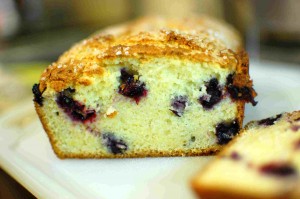
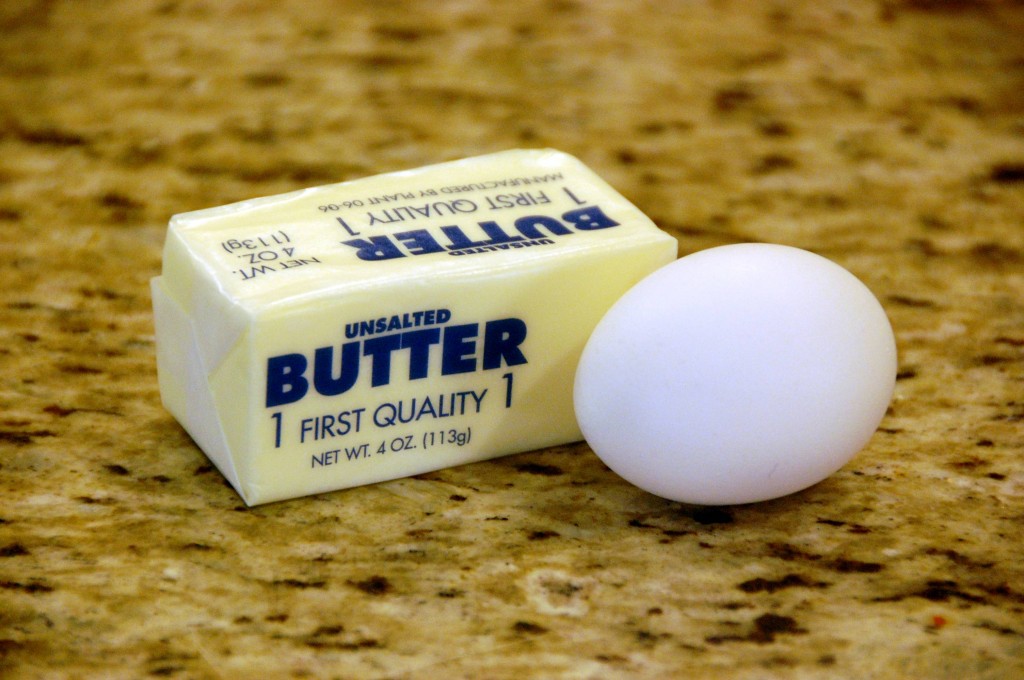
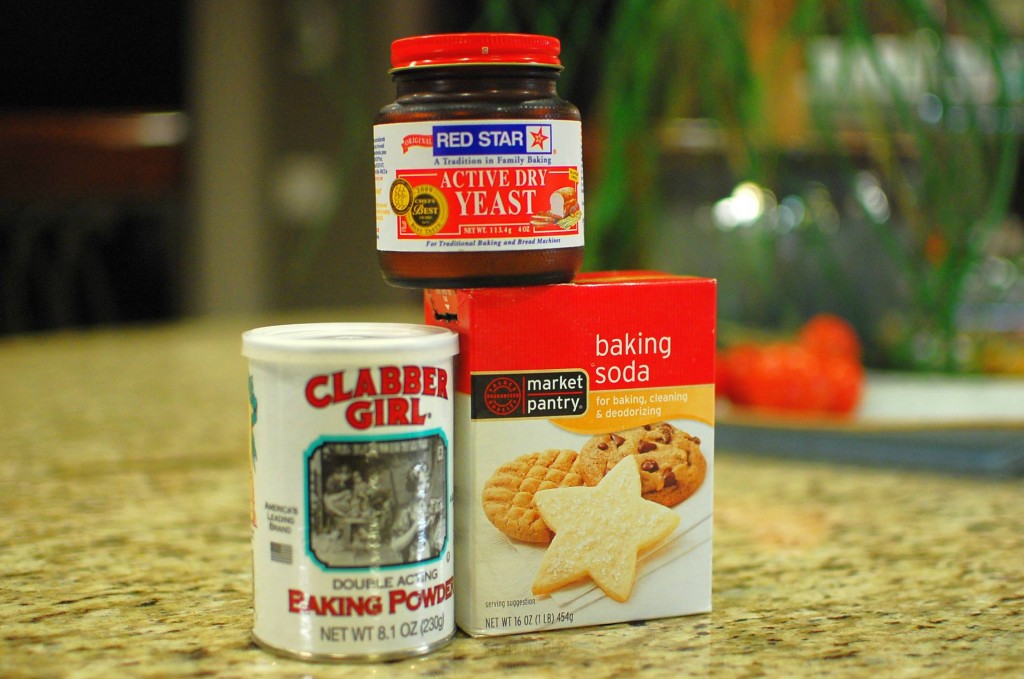
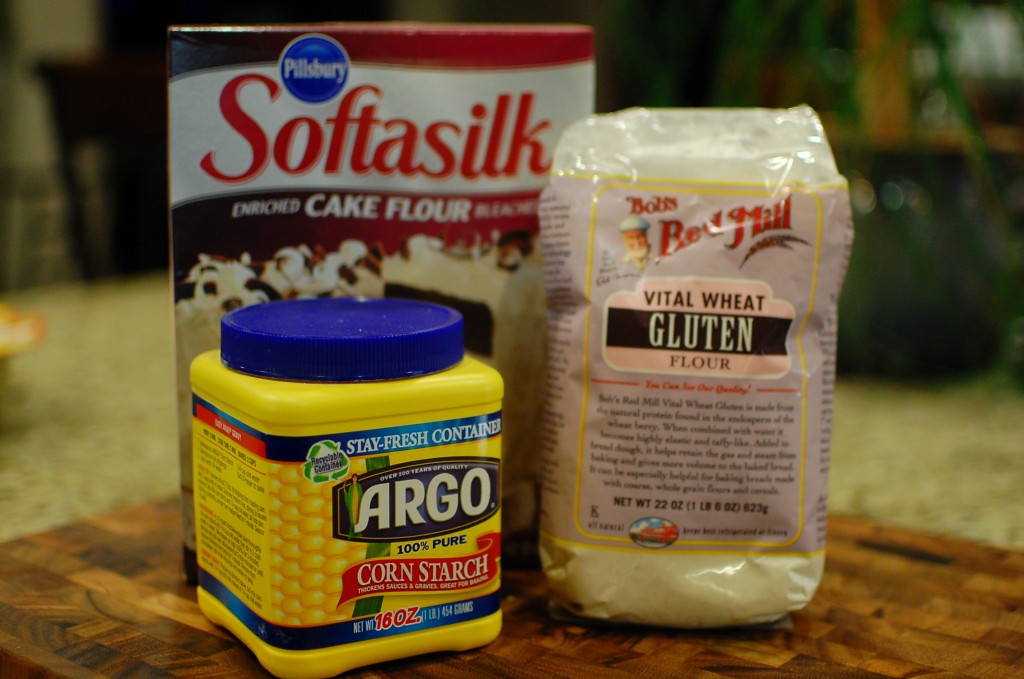
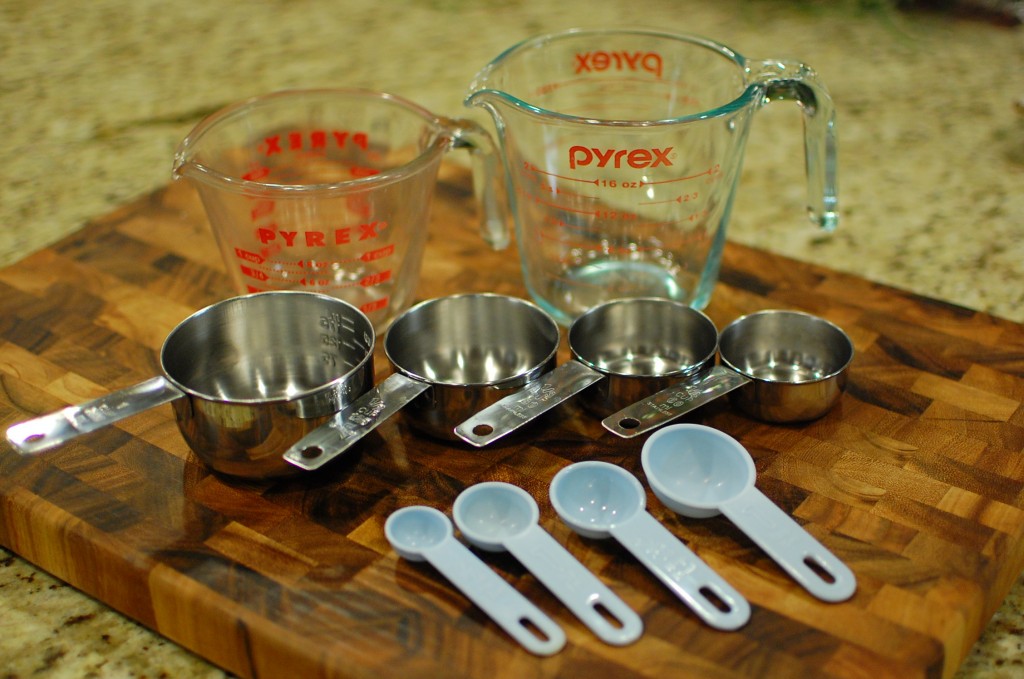
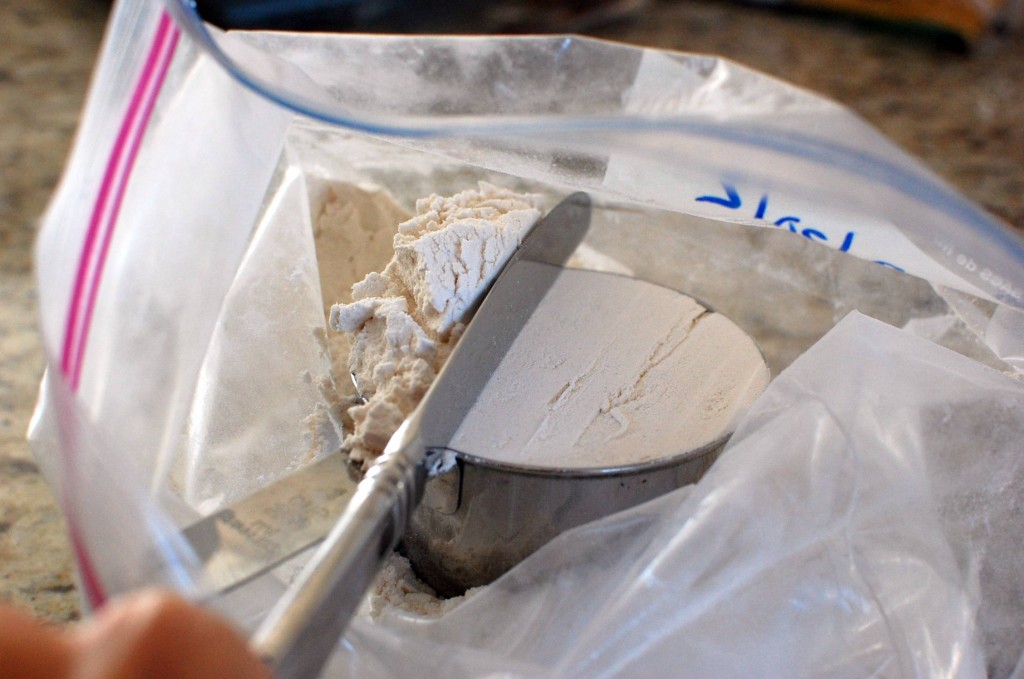
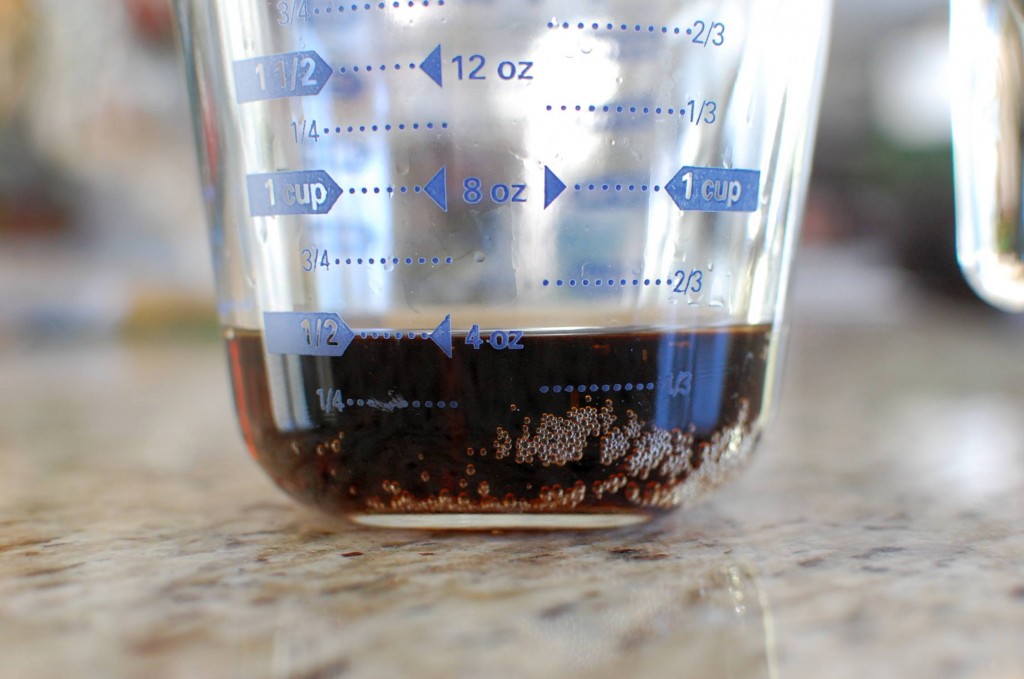
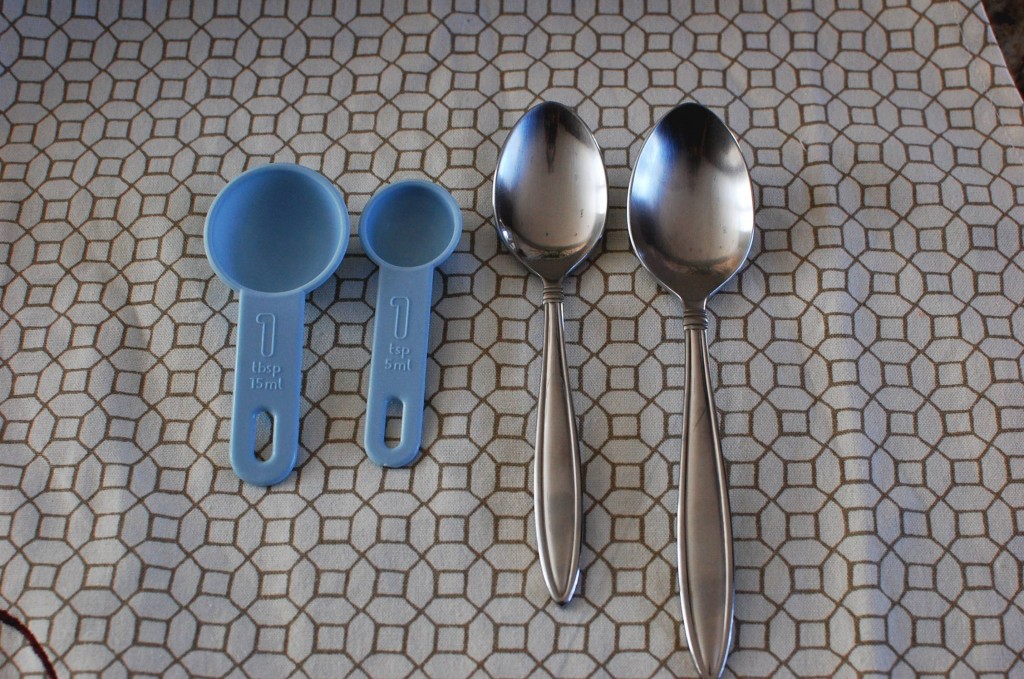
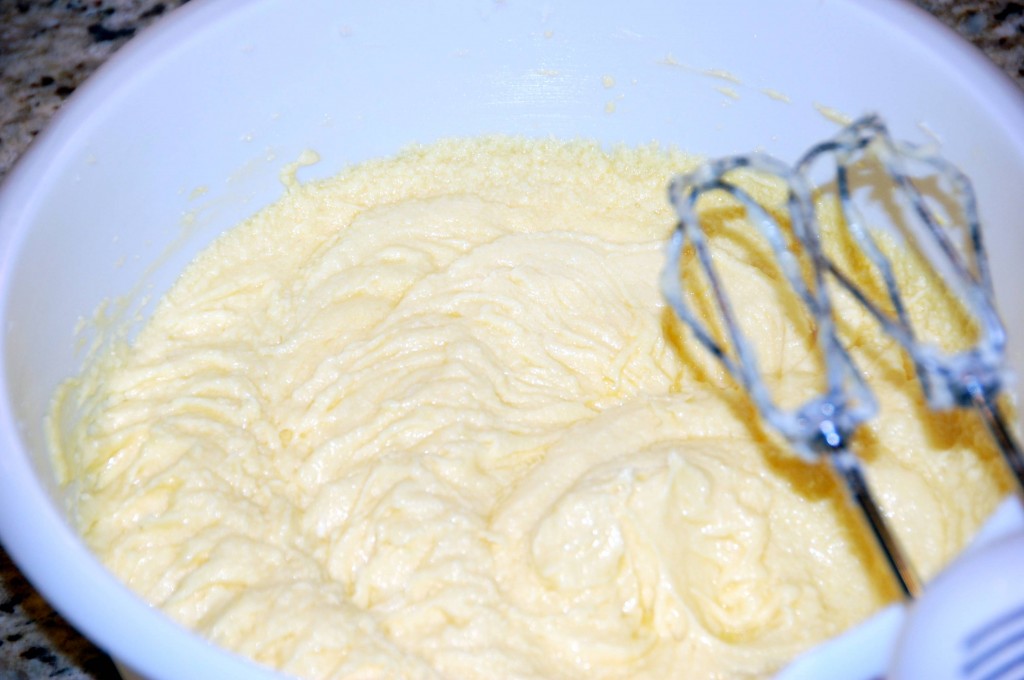
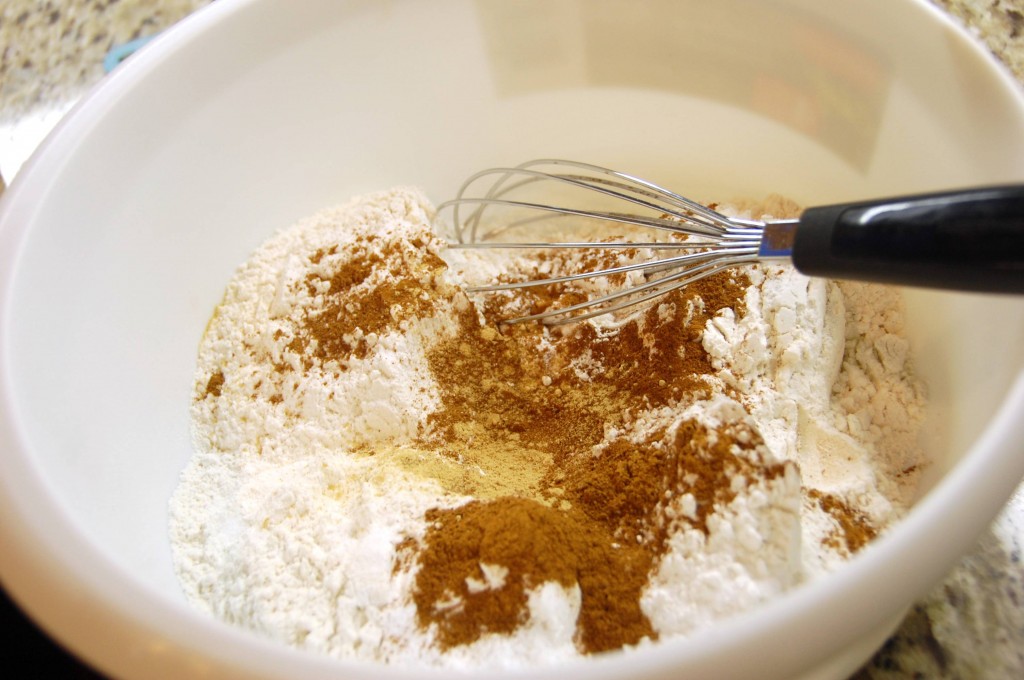
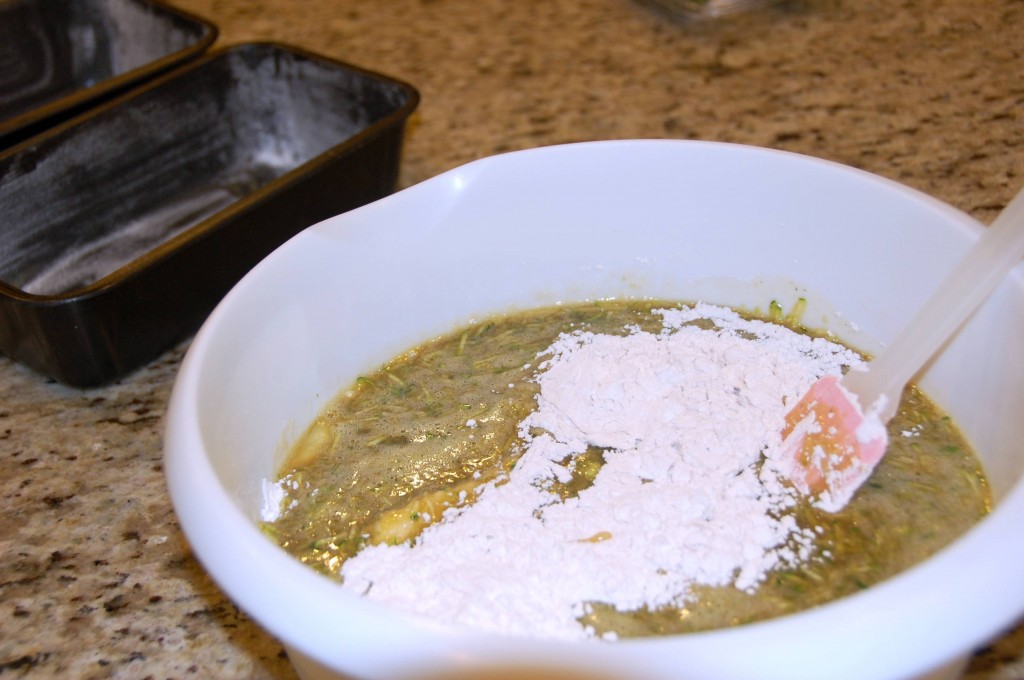
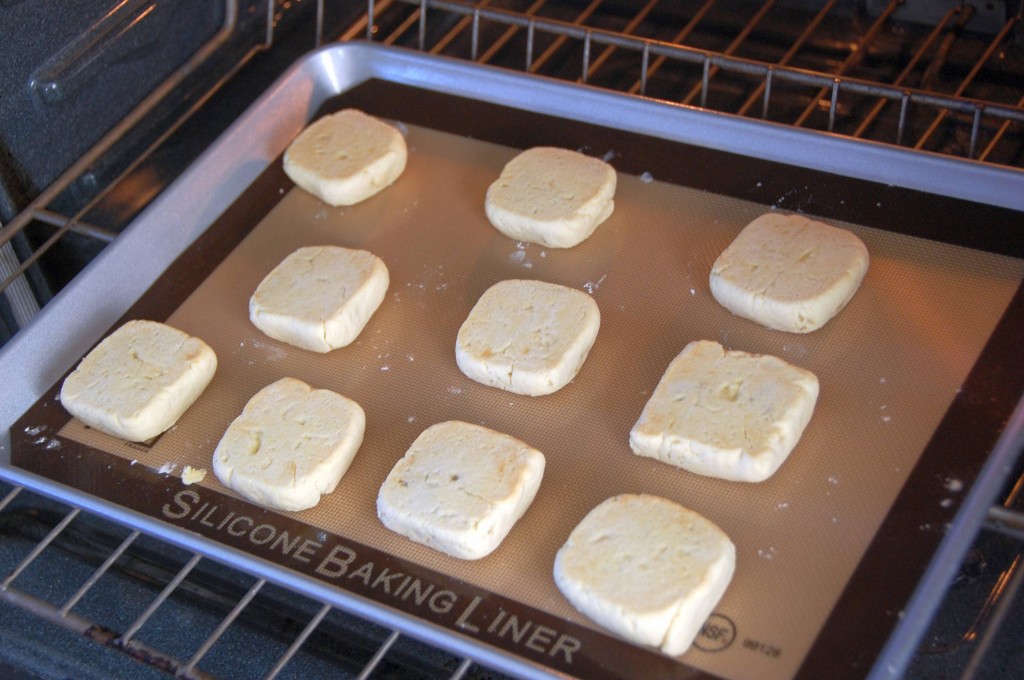
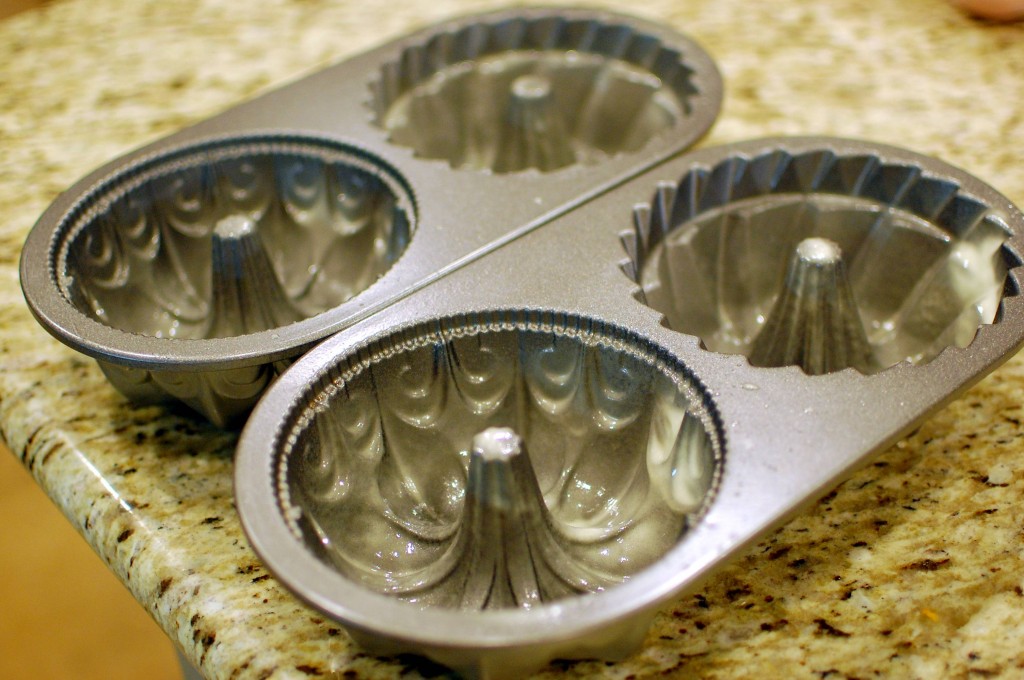
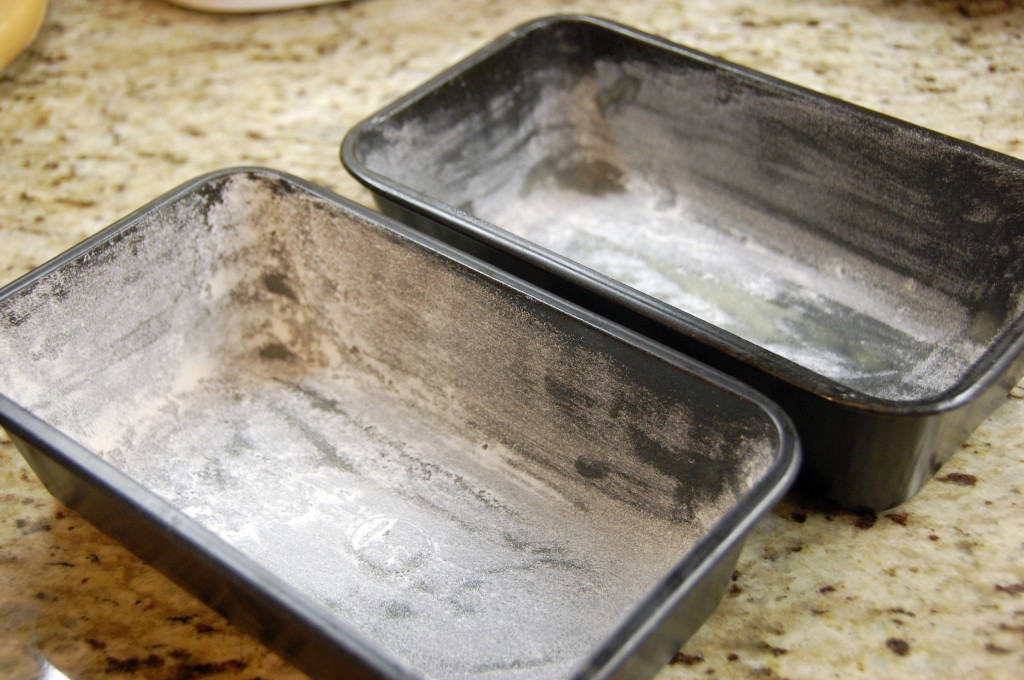
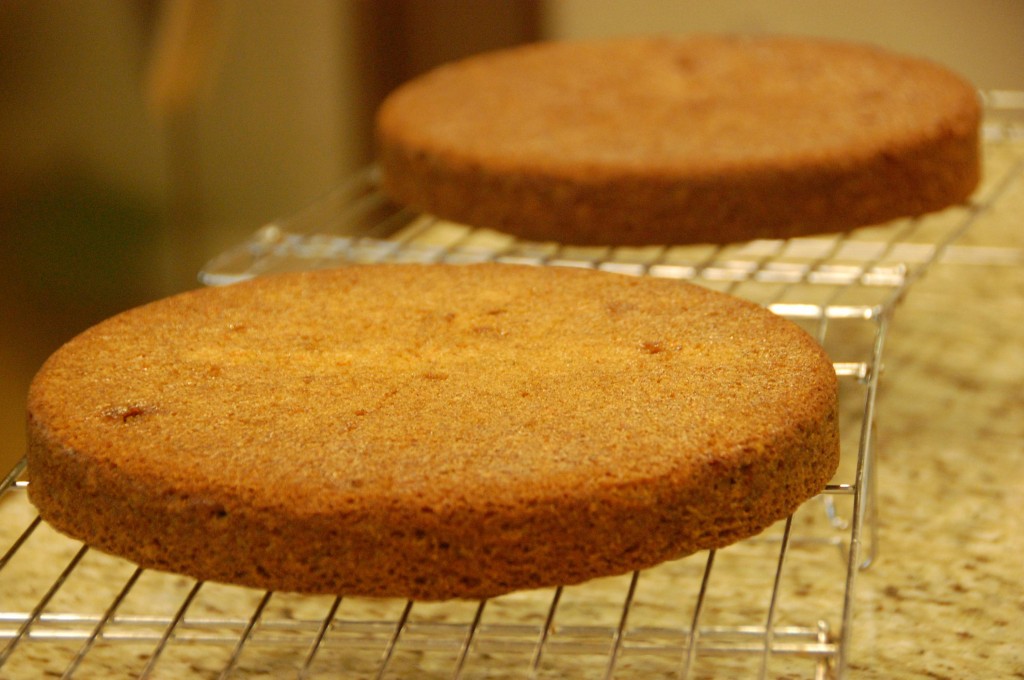
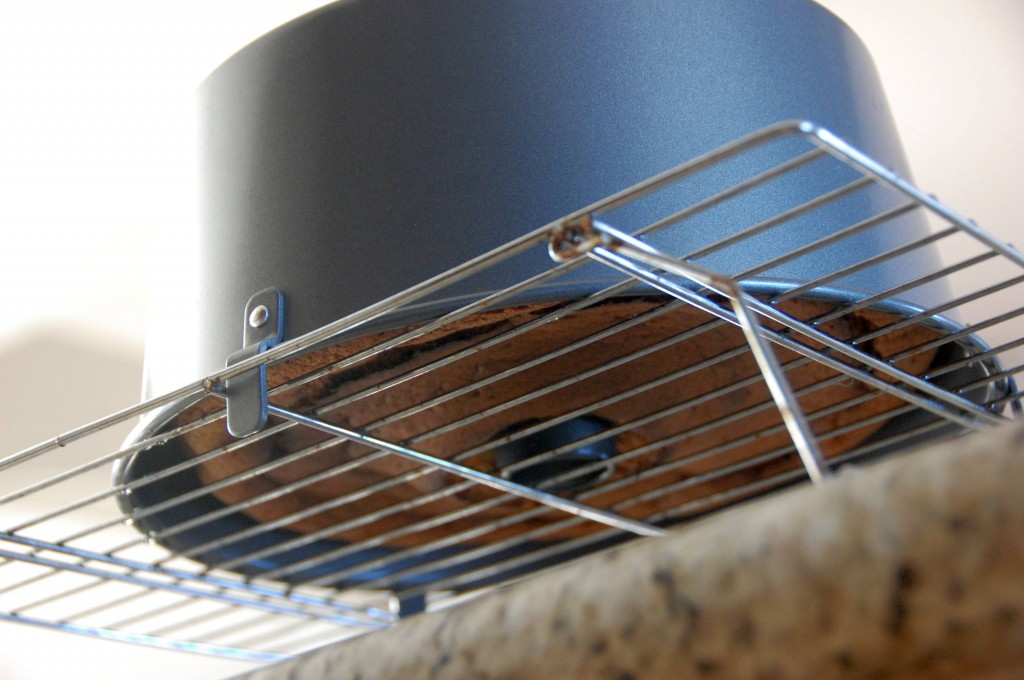
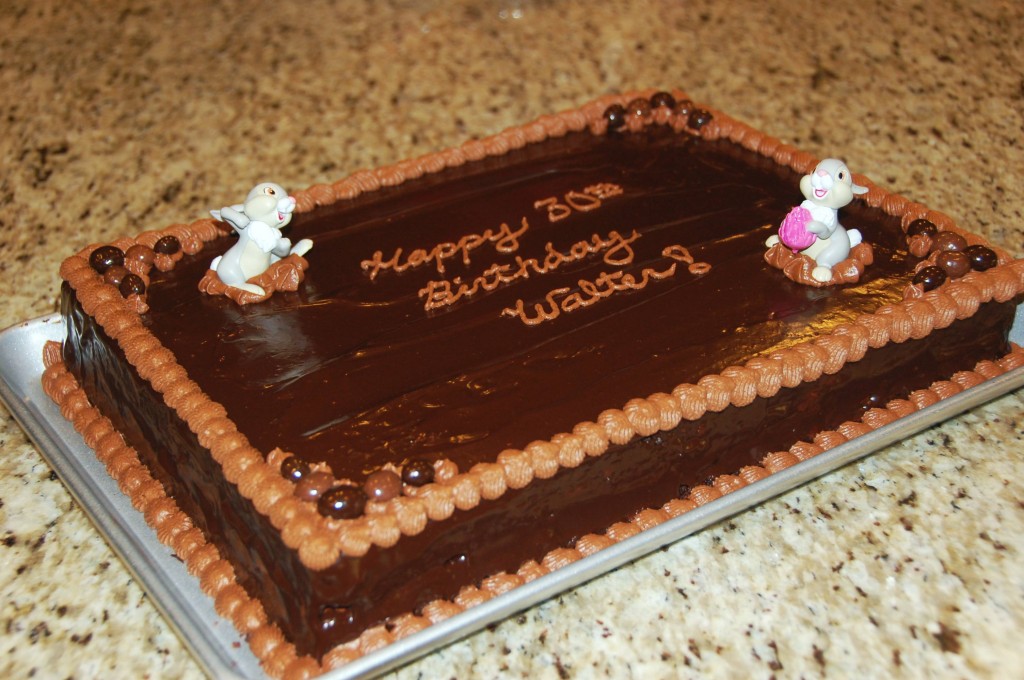


very interesting
Thanks for the post. It is very interesting to read from a European perspective, cooking and baking basics are quite different here. It’s very useful to learn what you do/use because it helps me when I am borrowing a friend’s kitchen when I for example travel US, or just work with american ingredients. I substitute ingredients all the time, so much that I dont even think about it, but that’s because I have the habit and know what to look for, and how the doe is supposed to react. It doesn’t even occur to me that this is not a given to everybody!
Love the info on the “cake flour”, in Europe almost all flour is all-purpose or variants of it (exception being in UK) and it is useful to see what you are using.
(I don’t think I will ever use spray fat for my baking trays though, I always use butter or oil, it’s just as easy and what I am used to, and I have it at home already… )
Thank you for the comment. I appreciate that you took the time to add your input! I’m sure things must be very different in Europe!
I’m sure things must be very different in Europe!
Oh, they are, but now I moved to Taiwan where things again are different, it’s fun to adjust to different environments! One thing that is very different is yeast, in US its more common with dry yeast where Sweden uses fresh yeast, same as Germany. (dry exists too but is less common). Most people have problems in the beginning when they try and make Swedish bread in US and until they learn to switch offtthe aircon while baking their bread won’t raise. I had problems in the beginning in Germany because yeast is smaller there than what I was used to. Oh the miracles of kitchen chemistry.
mam,what is wheat gluten,can i can make it at home
“Gluten” is a protein that comes from wheat – it’s an elastic substance that gives bread (like french bread, or other types of yeast bread) their stretchy and chewy texture. Without gluten, “bread” would have a texture more like “cake”. If you are making bread, the higher the protein content of the flour, the better you will be able to develop the gluten during the kneading process. Low protein flours (like cake flour) have much less gluten – the less gluten you have in your flour, the more your cake will have a soft fine crumb and delicate texture.
Hi Mika ,
regarding your method of putting a pizza stone on the bottom rack to maintain even temperature in the oven . Does it matter where you put the next rack (the one with your cake pan on) . Too high , too low or it doesn’t matter ? Thanks Amy
I usually set the rack in the very middle of the oven for best air flow. When I bake, I usually put everything on the same rack to avoid uneven cooking (like two 9″ cake pans). For cookie sheets, I make one sheet at a time.
Thank you for your tips.
I just started baking for over two months and this is really another tips for me to remember.
Thanks for your comment. I’m glad I could help. Baking is fun… and there is nothing better than having people enjoy the treats you made yourself. Every now and then something might not work, and that’s ok… just keep going and don’t sweat the mistakes.
Hi Mika, i want to ask you the weighing to measure All Purpose-Flour for the US measurements for 1 cup = 120gr or 150gr ? thanks a lot for reply
I’m sorry I don’t normally weigh my flour – I use volumetric cups. 1 cup = 236.588mL.
Thanks for this article, really helpful
I find this article very helpful. TI have no formal training in baking but have learned to bake some recipes thru the help of a friend. I want to learn the basics of baking so I searched and found this. Thank you.
I have a question please.
Do I heat the oven from above or below for baking or both
I want to bake Brownies
When baking, you can generally use bottom heat if your oven doesn’t have a “bake” setting. The top element is typically used for broiling.
Please advise me as to why some of my cakes would rise beautifully and all of a sudden they deflate around the center, but not around the borders I wander what I’m doing wrong. Thank you so much for your advise.
It could be that the center is undercooked – that’s one of the most common causes. Or you might be using too much or not enough leavener (baking soda/baking powder). Or your leavener could be expired and not functioning properly. Sometimes if your oven runs too hot or too cold that could also be an issue. Do all of your cakes do this, or just certain recipes? Recipes that are fat heavy can be finicky so you might try reducing the fat in your recipe by 1/4 cup if you suspect this is the issue. If you are baking a cake that is leavened by beaten egg whites (like a chiffon cake or angel cake), then you must follow instructions really carefully to avoid collapse because many of these require cooling upside down to avoid collapse.